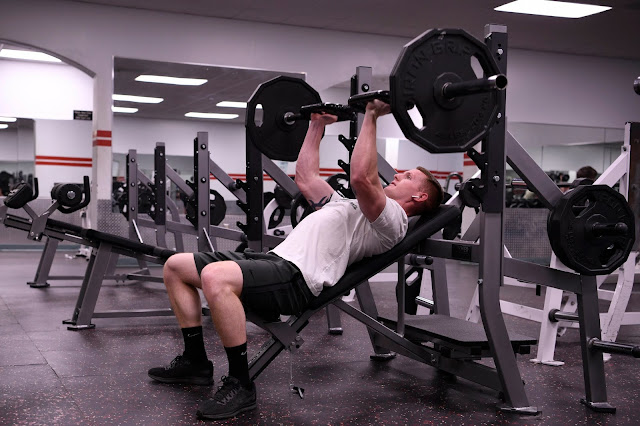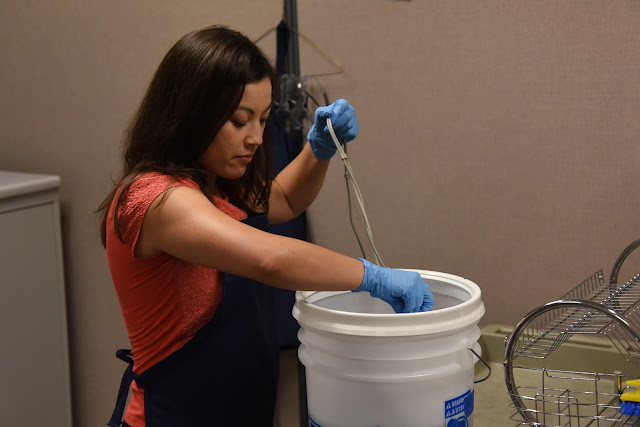223rd leads the way with new combat fitness testing
Story by Spc. Amy Carle
69th Public Affairs Detachment
As the sun peeked over the hills in Dublin, California, over 60 Soldiers from the 223rd Military Intelligence Battalion dashed across a field of artificial grass at Camp Parks, lifting weights and throwing medicine balls.
Army National Guard leaders from across California and Nevada had come out to observe the Soldiers as they participated in their first formal Army Combat Fitness Test (ACFT) of 2019.
The ACFT is scheduled to replace the current Army Physical Fitness Test (APFT) in the fall of 2020, and the 223rd is one of nine National Guard units implementing the pilot field test. The ACFT is a six-event test with a 600 point gender and age neutral scale. Unlike the Army’s current physical assessment, which only measures aerobic and muscular endurance, the ACFT also assesses anaerobic endurance and muscular strength.
“The test increases physical fitness and endurance compared to what we did before,” said Command Sgt. Maj. John F. Sampa, Command Sergeant Major of the Army National Guard. “Because it tests all parts of the body, you get a full body workout.”
Sampa wasn’t just observing; he completed every event in the assessment. Sampa said it was his first time performing the test at full-throttle, and that he was out taking the test to lead from the front as the new assessment rolled out across the National Guard.
Cadet Brooke N. Eicher, 223rd MI BN, has been part of the ACFT field test since it was implemented early in 2018, and was serving as a certified grader for the day’s events. She said she felt the test was a big improvement over the APFT.
“This gives a better idea of how well rounded the Soldier is, and compares to how they’ll do in combat,” Eicher said. “It’s a really good test of physical fitness. Each exercise has a point, and I think that is really important. The test manual explains what each exercise does and why it’s important in combat.”
The test was designed to measure a Soldier’s ability to perform activities faced in real-life scenarios, and each of the six events in the test corresponds to specific activities a Soldier might experience during combat operations.
There is a minimum baseline ACFT score for all Soldiers regardless of age or gender, though passing scores will vary based on the physical requirements of each military occupation. The baseline passing score requires a Soldier to deadlift 140 pounds for 3 repetitions, perform a standing power throw of a 10 pound ball at least 4.6 meters, execute 10 hand-release push-ups, complete the sprint-drag-carry in 3 minutes and 35 seconds, do 1 leg tuck, and run 2 miles in less than 21:07.
Spc. Nathan Clough, 223rd MI BN, was taking the test for the second time and said he felt it was successful in measuring overall fitness in comparison to the APFT.
“I think the ACFT is a better measure of overall fitness,” Clough said. “The APFT seemed to favor a lighter runner’s build. This event showed that it's also important to be able to move heavy loads and have explosive power on top of having a good cardio base.”
The new test has introduced new challenges, especially in the way it is administered and graded. As a grader, Eicher was responsible for more than counting repetitions and timing events - she coached form, encouraged the Soldiers to push their limits, and watched for safety risks.
“It takes a lot of concentration, especially during the the sprint drag carry,” Eicher said. “You have to run with the person you’re grading and think about what’s next for them. There’s a lot of safety considerations that can get them disqualified - a lot of little things to keep track of and a lot less room for error.”
The test also differs in the amount of interaction between graders and participants, and even among the participants themselves. Sampa said that graders should serve a key role in motivating and energizing the participants, and that the test is also designed in a way that makes it more engaging overall.
“This test is more of a competition, and you have people engaging with each other, which helps motivate,” he said. “It’s interactive, and everyone’s encouraging one another, so it’s more energizing.”
Eicher echoed the sentiment that graders need to help keep the event energized.
“As a grader, you have to motivate them and be on top of everything,” she said. “You really have to motivate them to go higher and push people a little past their limits - go a little higher than they might do for themselves.”
Clough said he felt good about the way the test went, but knew he could improve more. He said the test challenged him to push himself harder, and that he had to practice different exercises and be more disciplined in finding time to work out.
“With challenging careers, families and commute times in the bay area it's hard to find consistent time to work out,” Clough said, noting that he was able to adjust his routines to help his performance. “Instead of just doing pushups, situps and running leading up to the APFT, I focused on general fitness, lifting weights, TRX, kettlebells and cardio.”
Eicher said she had also adjusted her workouts to improve her results.
“The first time I took the test, I had just incorporated weights into my workout,” she said. “I was really struggling until I added deadlifts and squats. The running is the part that really smokes you, when you aren’t used to 90 minutes of intense working out. I incorporated endurance workouts with low rep and high weight. That kind of workout prepares you for this.”
Sampa said he was able to achieve success without modifying the core components of his workout, which centered on traditional bodyweight exercises like push-ups, but that it was important to learn new techniques to perform the exercises. He urged concerned Soldiers to learn more about the test.
“Before rendering a verdict, take the test first. Learn the test, learn the events, practice it. I think once they get involved they will have a positive verdict.”
Eicher agreed, saying that the new exercises test a more functional kind of fitness, and the neutral scoring evens out the experience.
“All the Soldiers I graded were over 38 years old, and everyone scored above a 400. Age, gender, it doesn’t matter with this test. APFT is all age and gender based, but with the ACFT, age doesn’t really matter anymore. Everyone’s on the same playing field.”
After 90 minutes, almost all off the 60 Soldiers had completed the test. Looking fatigued and spent, they spread across the field, conducting cool-down exercises and assessing their test performance. Sampa jogged back down the track to help motivate the last few runners crossing the finish line, and the graders started collecting their score-sheets.
Despite the intensity of the workout, the Soldiers talked excitedly about what they learned and what they would do differently. Despite their exhaustion, some went back to the equipment to test out form or a recommended technique.
Sampa said that the test is an example of how the Army is working to ensure peak performance and prioritize readiness.
“I refer everyone to the Soldier’s creed, being disciplined, mentally and physically tough,” he said. “This is what the ACFT is all about."




Comments
Post a Comment